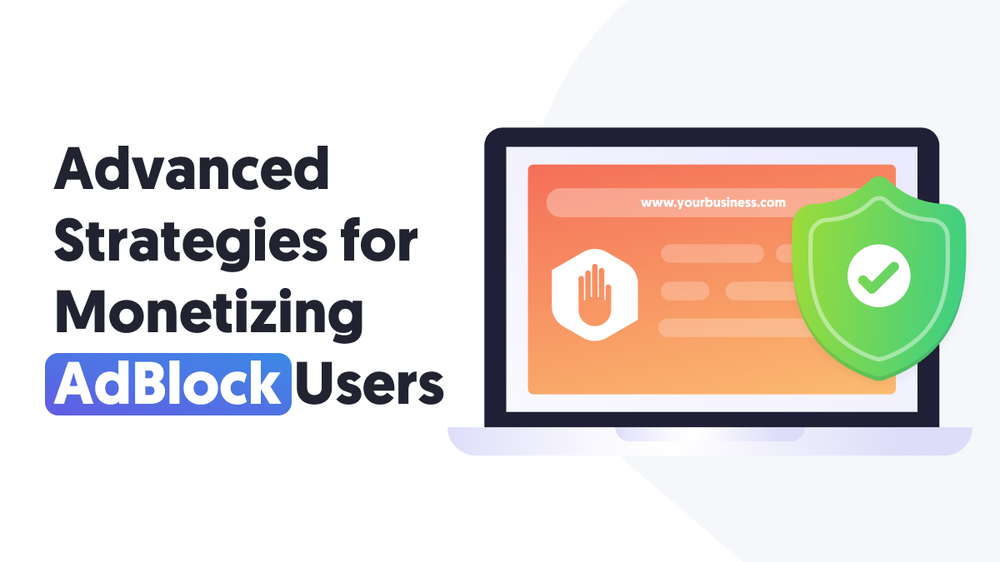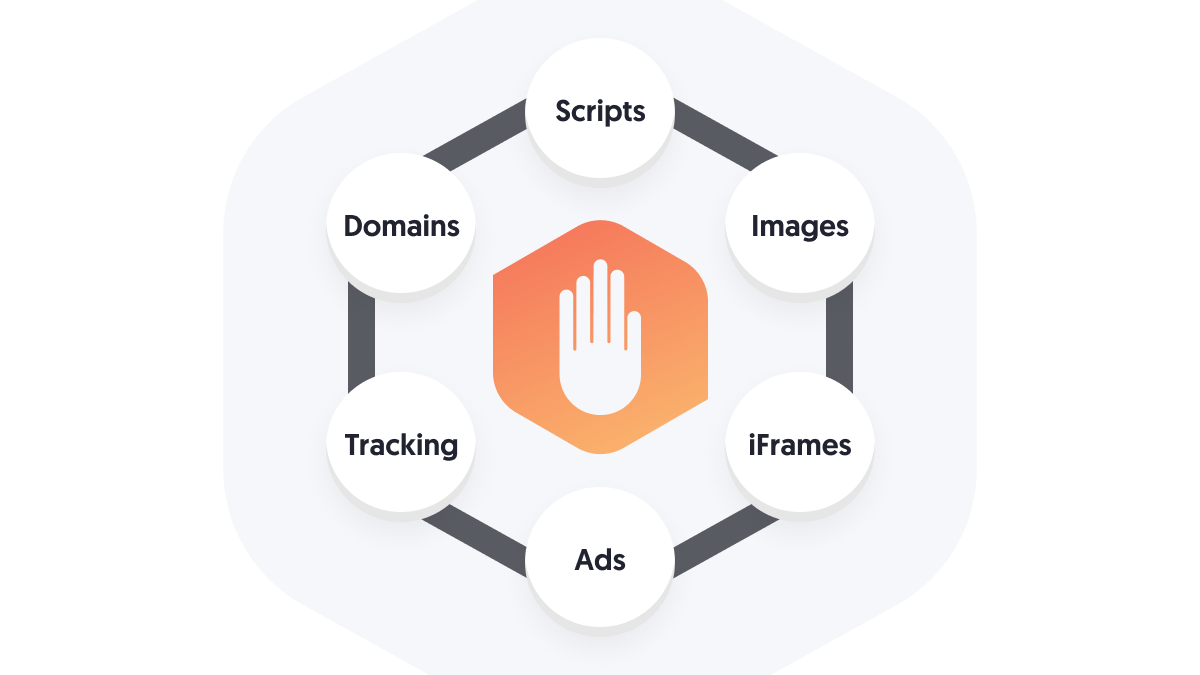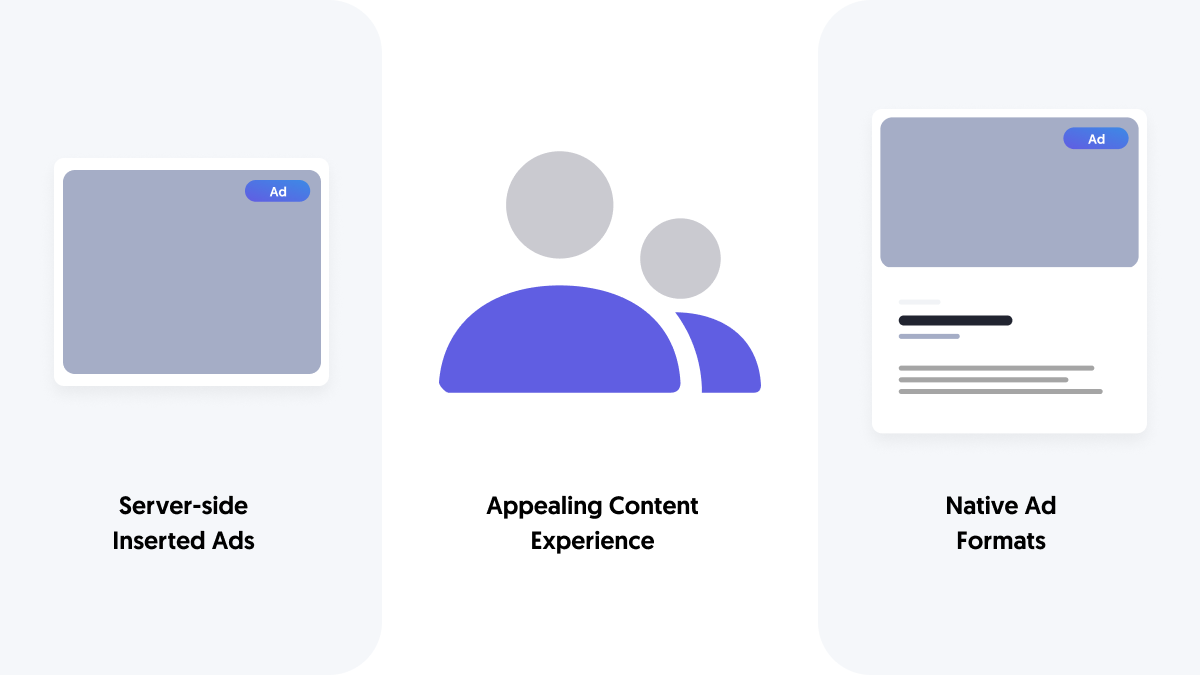
Advanced Strategies for Publishers to Monetize Adblock Users
Ad-blocking extensions claim to be tools for internet users who seek to enhance their browsing experience by eliminating disruptive advertising content. These extensions employ sophisticated algorithms to detect and neutralize ads, posing a significant challenge to publishers and advertisers. In this article, we delve into the technical intricacies of ad-blocking technology and explore innovative strategies for monetizing adblock traffic.
Understanding Ad Blocking Technology:
An ad blocker functions by intercepting a web browser's requests to load advertisements and selectively blocking or modifying them based on predefined criteria. This process involves analyzing the webpage's HTML code, identifying elements associated with advertising, and preventing their display. To achieve this objective, ad blockers employ various techniques, including list filtering, element blocking, and domain blocking, to achieve this objective.

List Filtering:
Ad blockers maintain extensive lists of known advertising domains and URLs, which they use to identify and block ads before loading. These lists are periodically updated to include new ad-serving domains and remove obsolete entries, ensuring effective ad blocking.
Element Blocking:
In addition to blocking entire ad units, ad blockers can selectively disable specific webpage elements, such as images, scripts, and iframes, associated with advertising content. This granular approach allows ad blockers to remove ads while preserving the integrity of the underlying webpage.
Disabling Tracking:
Ad blockers often include features to prevent online tracking and profiling by blocking cookies, tracking pixels, and other tracking mechanisms employed by advertisers and data brokers.
Domain Blocking:
Ad blocking software maintains blocklists of specific domains and websites known to host intrusive or malicious advertisements. These blocklists are curated based on user feedback, community contributions, and automated analysis to identify and blacklist offending domains.
Serving Advertisements:
Interestingly, some ad blockers monetize their services by serving "acceptable" advertisements to users who have opted into their program. Publishers participating in these programs share a portion of the ad revenue generated by these "whitelisted" ads.
Impact of Ad Blockers on Publishers:
Ad blockers significantly influence publishers, not only in terms of direct revenue loss but also through a myriad of indirect consequences.
Ad blockers take a substantial toll on publishers' revenue streams, with estimates suggesting global losses amounting to a staggering $42.7 billion annually, as reported by PageFair's 2022 Adblock Report, Particularly prevalent in regions like North America and Europe, where adoption rates are high, the financial impact on publishers is profound.
The trend of revenue decline attributed to ad blockers is on a relentless upward trajectory. Over the years, the figures have soared, with losses in the US alone skyrocketing from $3.89 billion in 2016 to an alarming $12.12 billion by 2020 (Source: Statista) . Such exponential growth underscores the escalating challenge publishers face in navigating the ad-blocking landscape.
However, the repercussions of ad blockers extend far beyond mere monetary losses like reduced advertiser reach or loss of Data and Insights.
Advanced Monetization Strategies:
In response to the growing prevalence of ad-blocking extensions, publishers have developed advanced monetization strategies to overcome this challenge and maximize revenue potential. These strategies leverage cutting-edge technologies and industry best practices to deliver targeted advertising content while maintaining user experience and compliance with acceptable ad standards.

Server-Side Ad Insertion (SSAI): A Technical Deep Dive:
Server-side ad insertion (SSAI) represents a groundbreaking solution for publishers seeking to bypass ad blockers and deliver seamless ad experiences to users. By integrating ad content with video streams at the server level, SSAI eliminates the ad request process and ensures consistent ad delivery across all devices and platforms. This technology enables publishers to monetize adblock traffic effectively, enhancing user engagement and revenue potential.
Technical Implementation of Acceptable Ads:
The Acceptable Ads initiative offers a standardized approach to ad monetization that balances user preferences with publisher revenue objectives. By adhering to predefined ad formats and placement guidelines, publishers can effectively monetize adblock traffic without compromising user experience. Implementing Acceptable Ads involves integrating compliant ad formats into publisher websites and leveraging server-side integration techniques to optimize ad delivery.
Native Advertising: Technical Considerations and Best Practices:
Native advertising presents a compelling opportunity for publishers to integrate promotional content seamlessly into the user experience. From a technical perspective, native ads require careful consideration of content formatting, placement, and integration methods. By leveraging server-side integration techniques and optimizing ad delivery for different device types, publishers can maximize the effectiveness of native advertising while minimizing the impact of ad-blocking extensions.
Strategic Partnerships with Ad Tech Providers:
Selecting the right ad tech partner is critical for publishers seeking to implement advanced monetization strategies in the face of ad-blocking challenges. Ad tech providers offer innovative solutions such as ad reinsertion technology, programmatic ad serving, and anti-ad blocking mechanisms. By integrating these solutions into their digital infrastructure, publishers can optimize ad delivery, enhance user engagement, and maximize revenue potential.
Leveraging Programmatic Audio Advertising:
Programmatic audio advertising represents a promising avenue for publishers to diversify their revenue streams and reach audiences effectively. By leveraging real-time bidding algorithms, audience targeting technologies, and audio ad-serving platforms, publishers can deliver targeted ads within audio content. Programmatic audio advertising offers a compelling solution for bypassing ad blockers and monetizing adblock traffic while delivering engaging ad experiences to users.
In today's dynamic digital environment, ad blockers pose significant hurdles for publishers aiming to maximize their content monetization efforts. While the immediate financial impact is evident, the broader repercussions permeate every aspect of publishers' operations.
As revenue losses mount, publishers are compelled to adapt and innovate swiftly. Embracing alternative revenue streams like native advertising and server-side ad insertion becomes imperative to bypass the barriers presented by ad blockers while fostering sustainable income avenues.
Furthermore, prioritizing user-centric strategies is crucial. By delivering content experiences that prioritize value and resonate with audiences, publishers can cultivate stronger connections, fostering loyalty and engagement despite the prevalence of ad blockers.
While ad blockers present formidable challenges, they also serve as catalysts for publishers to rethink their revenue models and reinforce their digital foothold. By navigating this landscape with agility and ingenuity, publishers can emerge resilient and better positioned to thrive in an increasingly ad-blocked environment.